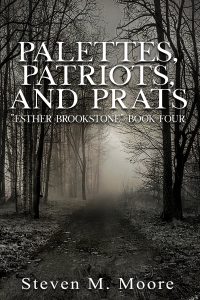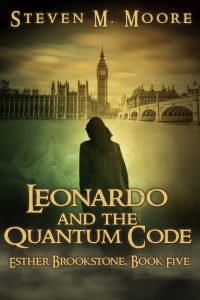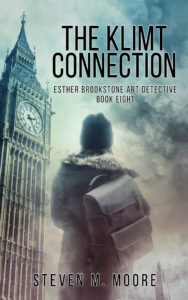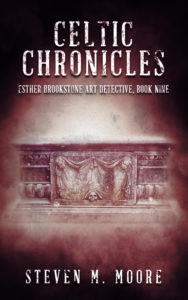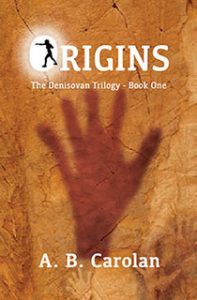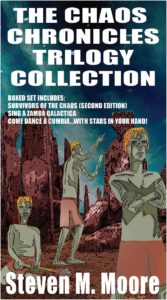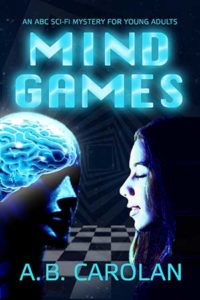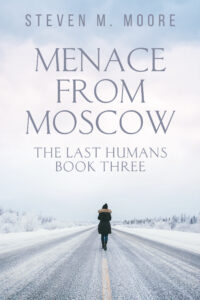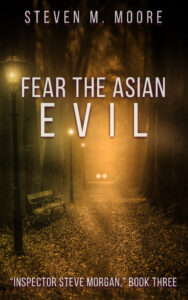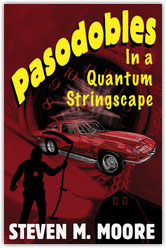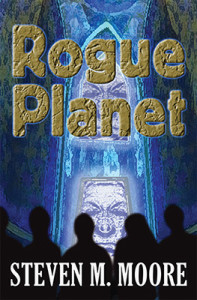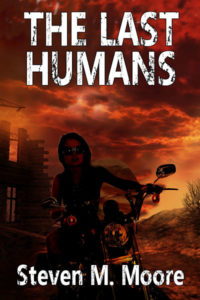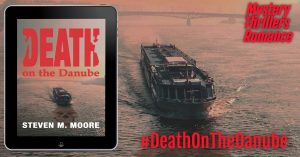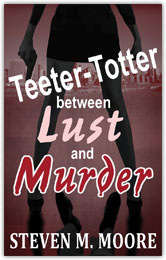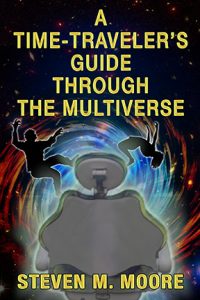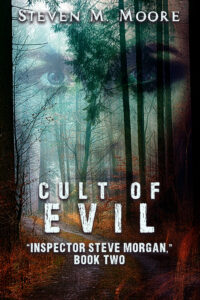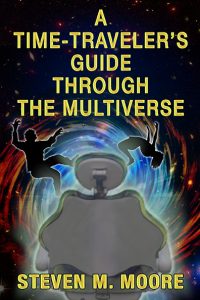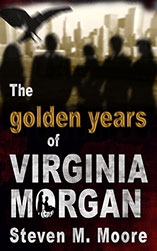Chen and Castilblanco go international…
May 29th, 2024It’s a global economy, now more than ever; so crime’s more global as well: International conspiracies; arms, artworks, drugs, and human traffickers; spies and terrorists—they’re all subjects for mystery and thriller novels that allow a reader to become an armchair traveler who accompanies crime fighters and soldiers of fortune on their international journeys. I went on those journeys as a reader of Agatha Christie and H. Rider Haggard’s novels years ago, but I also created a few of those adventures myself for other readers as well, starting years ago with my NYPD detectives Chen and Castilblanco.
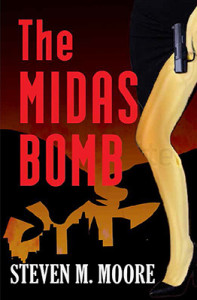 I’ve chronicled quite a few of their cases in the “Detectives Chen and Castilblanco” series. Most start in New York City, but about half of them go international…or start there! The Midas Bomb, the first novel in the series, appropriately takes place in the world’s most famous city (there are international flashbacks and back stories involving Castilblanco, though), but the villains are international in origin. That’s an obvious mix to make because NYC is often called the “crossroads of the world,” a city so diverse that over 800 different languages and dialects are spoken there besides English.
I’ve chronicled quite a few of their cases in the “Detectives Chen and Castilblanco” series. Most start in New York City, but about half of them go international…or start there! The Midas Bomb, the first novel in the series, appropriately takes place in the world’s most famous city (there are international flashbacks and back stories involving Castilblanco, though), but the villains are international in origin. That’s an obvious mix to make because NYC is often called the “crossroads of the world,” a city so diverse that over 800 different languages and dialects are spoken there besides English.
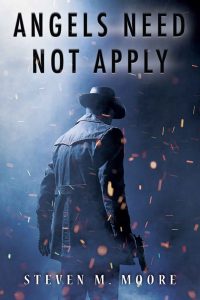 Other novels in the series have an even stronger international flavor: In Angels Need Not Apply, Aristocrats and Assassins, Gaia and the Goliaths, and Defanging the Red Dragon, the city, if it’s a character, plays a minor role.
Other novels in the series have an even stronger international flavor: In Angels Need Not Apply, Aristocrats and Assassins, Gaia and the Goliaths, and Defanging the Red Dragon, the city, if it’s a character, plays a minor role.
 The most international of these novels, Aristocrats and Assassins, is a tale of international intrigue and terrorism that takes place completely in Europe—much of Europe is visited, in fact. It starts with Castilblanco and his wife Pam beginning a rare vacation they’ve promised themselves for a while—she’s a busy TV news reporter and he’s a cop, so their periods of free time don’t often overlap! A group of terrorists are kidnapping European aristocrats. The motive’s not clear, but Castilblanco gets involved. The action involving Chen begins in China, but the two detectives eventually come together to solve the mystery of the kidnappings.
The most international of these novels, Aristocrats and Assassins, is a tale of international intrigue and terrorism that takes place completely in Europe—much of Europe is visited, in fact. It starts with Castilblanco and his wife Pam beginning a rare vacation they’ve promised themselves for a while—she’s a busy TV news reporter and he’s a cop, so their periods of free time don’t often overlap! A group of terrorists are kidnapping European aristocrats. The motive’s not clear, but Castilblanco gets involved. The action involving Chen begins in China, but the two detectives eventually come together to solve the mystery of the kidnappings.
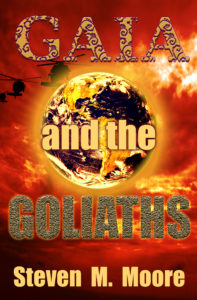 The other “international novels” in the series take place only partially overseas. Angels Need Not Apply is about a conspiracy where a drug cartel, Muslim terrorists, and an American ultra-right militia team up to create major mayhem. Each group has a different motive to create chaos, so Chen and Castilblanco’s struggles to thwart their plans aren’t easy. A lot of Gaia and the Goliaths takes place in France. In perhaps my most prescient take on things to come, an American energy exec teams up with a Russian petrol-oligarch to try to increase the West’s dependence on fossil fuels.
The other “international novels” in the series take place only partially overseas. Angels Need Not Apply is about a conspiracy where a drug cartel, Muslim terrorists, and an American ultra-right militia team up to create major mayhem. Each group has a different motive to create chaos, so Chen and Castilblanco’s struggles to thwart their plans aren’t easy. A lot of Gaia and the Goliaths takes place in France. In perhaps my most prescient take on things to come, an American energy exec teams up with a Russian petrol-oligarch to try to increase the West’s dependence on fossil fuels.
Defanging the Red Dragon is a crossover novel that connects the “Detectives Chen and Castilblanco” series with the “Esther Brookstone Art Detective” series (it’s novel #8 for the first and #6 for the second). It begins in NYC and continues to DC and London. Castilblanco is present in both the US and UK; Chen holds down the fort in the US. (Esther and her new husband Bastiann van Coevorden had earlier cameos in several “Chen and Castilblanco” novels—Esther in The Collector and Bastiann in Aristocrats and Assassins and Gaia and the Goliaths.)
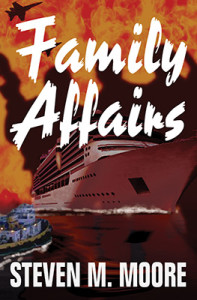 Unlike what Michael Connolly did with his famous Harry Bosch, I didn’t want to restrict Chen and Castilblanco to one city and turn their cases there into mystery/thriller novels that are little more than police procedurals. There are very few Harry Bosch novels with an international flavor (most take place in LA), but policing these days often has an international flavor, if only for international terrorism. (Even my Family Affairs has this aspect.) I believe authors like Baldacci, Connolly, Child, Deaver, and other old stallions in the Big Five’s stables would appeal to more readers if they went international more often. (In Deaver’s defense, his best book, Garden of Beasts, is completely international, but it’s not in his “Lincoln Rhyme” series!) Maybe foreign readers love stories set in the US, but I bet a lot of American readers like stories with an international flavor. (I certainly do!)
Unlike what Michael Connolly did with his famous Harry Bosch, I didn’t want to restrict Chen and Castilblanco to one city and turn their cases there into mystery/thriller novels that are little more than police procedurals. There are very few Harry Bosch novels with an international flavor (most take place in LA), but policing these days often has an international flavor, if only for international terrorism. (Even my Family Affairs has this aspect.) I believe authors like Baldacci, Connolly, Child, Deaver, and other old stallions in the Big Five’s stables would appeal to more readers if they went international more often. (In Deaver’s defense, his best book, Garden of Beasts, is completely international, but it’s not in his “Lincoln Rhyme” series!) Maybe foreign readers love stories set in the US, but I bet a lot of American readers like stories with an international flavor. (I certainly do!)
 I’ll admit that sometimes my novels might have too much international flavor (e.g., Muddlin’ Through and Goin’ the Extra Mile, the first and third novels in the “Mary Jo Melendez Mysteries”). Perhaps either extreme is bad? If that’s the case, the “Chen and Castilblanco” series is the Goldilocks choice for readers who want some crime stories that are an eclectic mix. (You can leave a comment to this article or use my contact page to tell me what you think of this.)
I’ll admit that sometimes my novels might have too much international flavor (e.g., Muddlin’ Through and Goin’ the Extra Mile, the first and third novels in the “Mary Jo Melendez Mysteries”). Perhaps either extreme is bad? If that’s the case, the “Chen and Castilblanco” series is the Goldilocks choice for readers who want some crime stories that are an eclectic mix. (You can leave a comment to this article or use my contact page to tell me what you think of this.)
***
Comments are always welcome. (Please follow the rules spelled out on the “Join the Conversation” web page.)
“Detectives Chen and Castilblanco” Series. This seven-book series (eight, if you count Defanging the Red Dragon, a free PDF available on the “Free Stuff & Contests” web page at this website) takes you from Manhattan in the US to Latin America and Europe and beyond as the NYPD detectives battle the criminal elements of humanity. Chen is a Chinese American from Long Island whose beguiling Mona Lisa smile belies her cleverness and strength; Castilblanco is a sarcastic and tough Puerto Rican American from the Bronx. Both are ex-military and suffer no fools. These novels are available wherever quality ebooks are sold. There are many hours of reading entertainment waiting for all armchair detectives out there who are fans of mysteries and thrillers.
Around the world and to the stars! In libris libertas!


